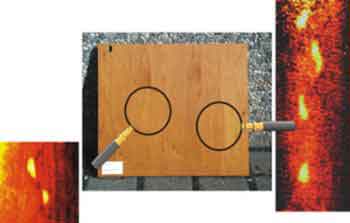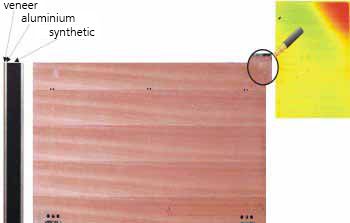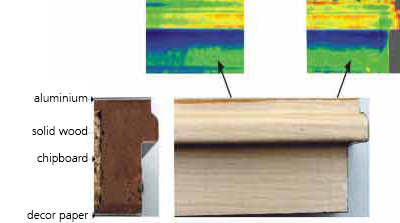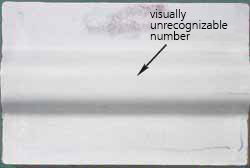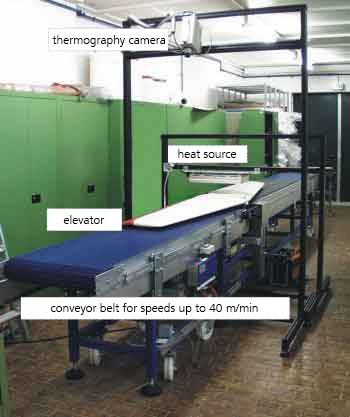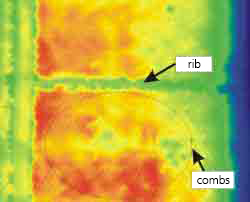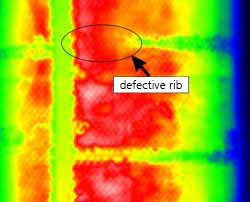In thermographic adhesion failure detection, the elevator and the two wings of a glider are passed under a heat source with the aid of a conveyor belt, and the surface is heated by approx. 2 K. The thermographic images are then recorded. The thermographic camera mounted behind it then recorded the thermographic images of the respective front and rear surfaces.
Noticeably warmer (red and yellow in false color representation) than their surroundings stand out the areas under which the paper honeycomb structure is located, which essentially consists of air (poor heat conductor). The gluing of the plywood surface to the honeycombs is clearly visible. In addition, the honeycombs appear differently warm because the amount of glue underneath, and thus its heat capacity, varies greatly (bottom, left).
Significantly cooler (green and blue in false color representation) than the paper honeycomb surfaces appear the areas directly above the ribs, and where these are well bonded to the rib (good thermal conductivity across the adhesive into the rib). Again, the glue that emerged from the joint during bonding, with its increased heat capacity, can be seen by the frayed edges of the rib.
The areas of the ribs that are no longer sufficiently bonded to the substrate appear warmer in the thermographic image and are indicated by the red colors.

